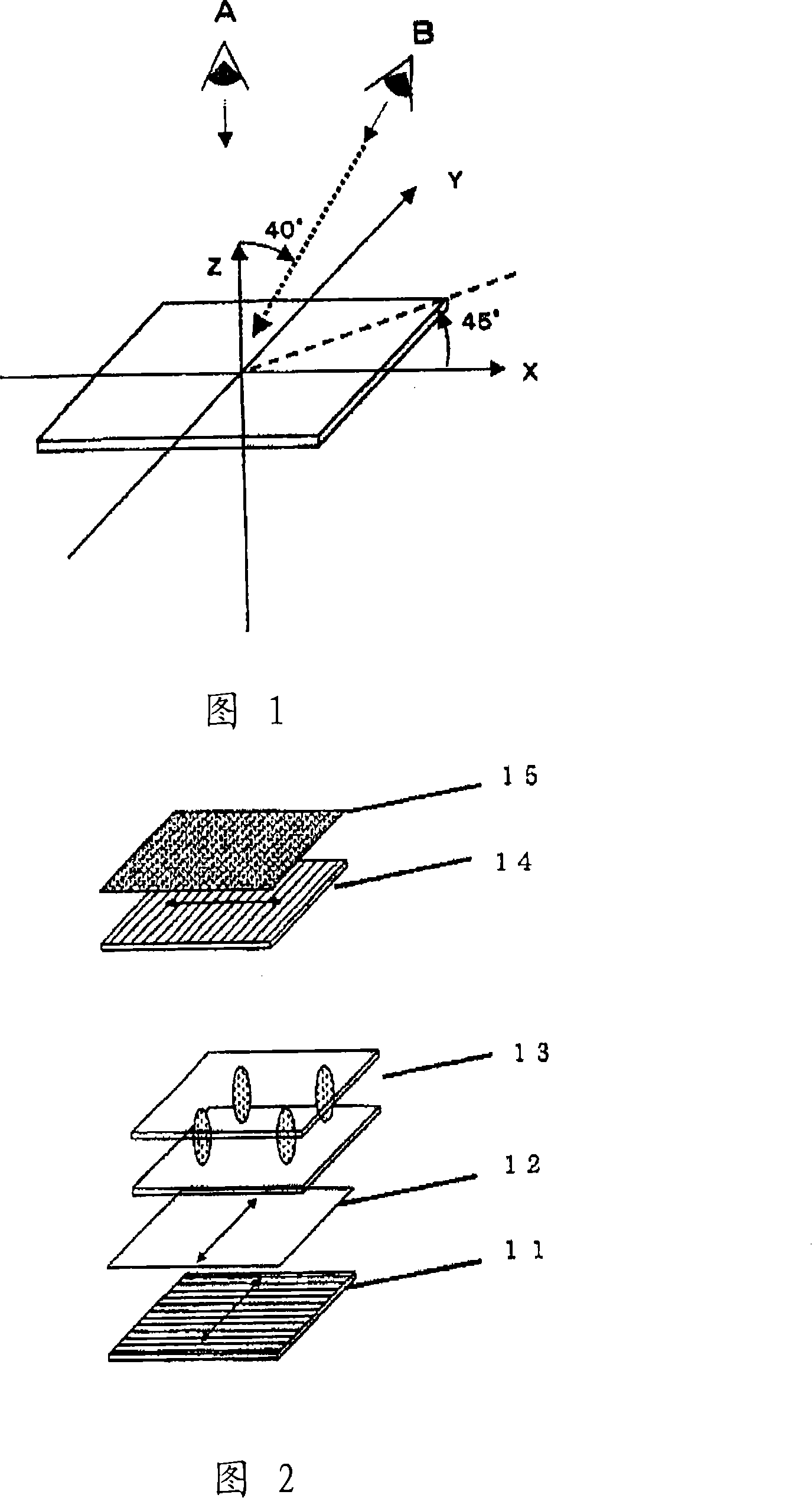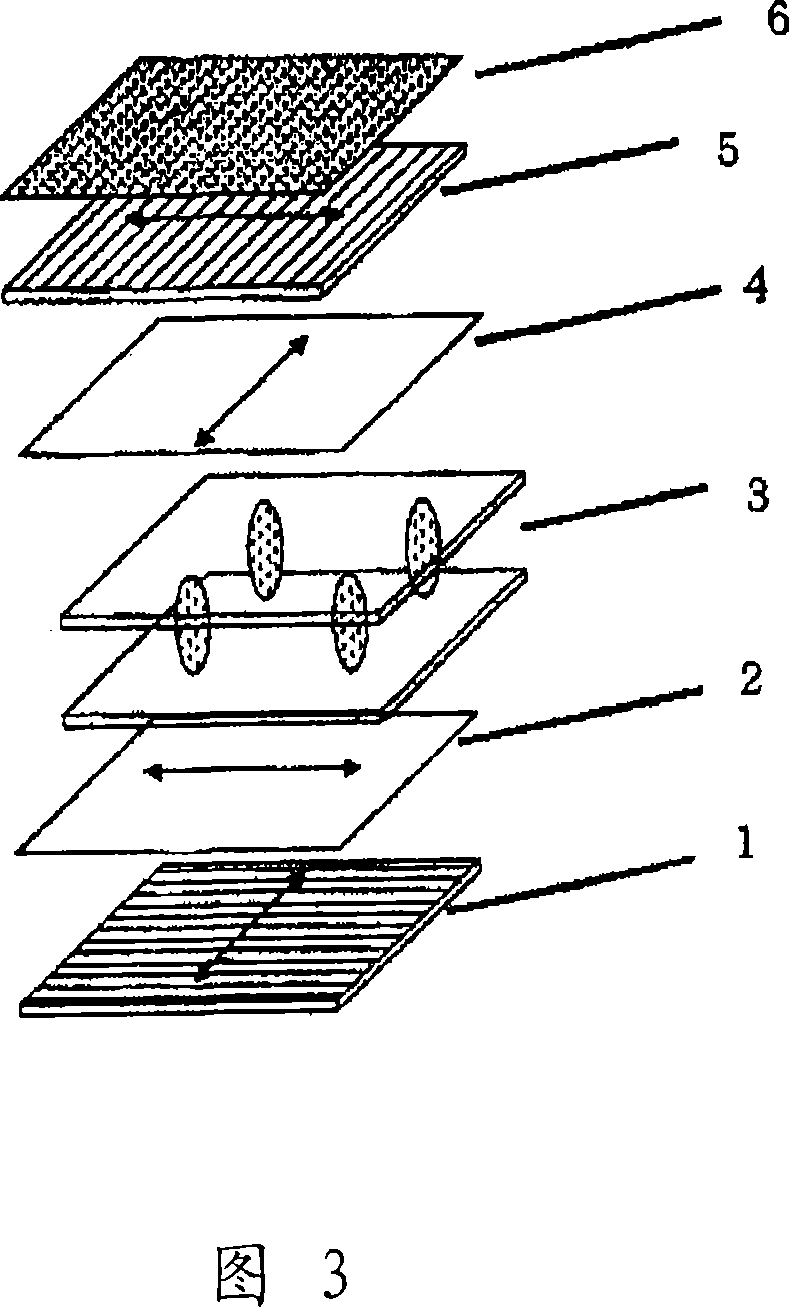Liquid crystal display unit
A liquid crystal display device and liquid crystal cell technology, applied in optics, instruments, nonlinear optics, etc., can solve the problems of color doping of reflected light, large wavelength dependence of anti-reflection effect, poor productivity, etc., and achieve a wide viewing angle and display quality. Good effect with excellent damage resistance
- Summary
- Abstract
- Description
- Claims
- Application Information
AI Technical Summary
Problems solved by technology
Method used
Image
Examples
Embodiment
[0205] Hereinafter, the present invention will be described in more detail using examples, but the present invention is not limited to the following examples. However, parts and % are based on weight unless otherwise specified.
[0206] In addition, in an Example and a comparative example, measurement and evaluation were performed by the following method.
[0207] (1) Thickness
[0208] After embedding the optical laminate in epoxy resin, it was cut into a thickness of 0.05 μm using a microtome (manufactured by Yamato Industries, Ltd., RUB-2100), and the cross-section was observed and measured using a scanning electron microscope. For laminates, measurements are made for each layer.
[0209] (2) Refractive index
[0210] Under the conditions of temperature 20°C±2°C and humidity 60±5%, use an automatic birefringence meter (manufactured by Oji Scientific Instruments Co., Ltd., KOBRA-21) to determine the in-plane retardation of the optical anisotropic body at a wavelength of 5...
manufacture example 1
[0238] (Manufacturing example 1) Production of original film
[0239] For norbornene-based polymer (trade name: ZEONOR 1420R, manufactured by ZEON Co., Japan, glass transition temperature: 136° C., saturated water absorption: less than 0.01% by weight) pellets were dried at 110° C. using a hot air drier with circulating air for 4 Hour. Then, using a polymer filter (filter precision 30 μm) in the shape of a leaf disc, and having an average surface roughness Ra=0.04 μm plated with chrome at the front end of the die lip, and a T-die of the coating hanger type with a lip width of 650 mm A single-screw extruder was used to melt-extrude the pellets at 260° C. to obtain an original film with a thickness of 200 μm and a width of 600 mm.
manufacture example 2
[0240] (Production Example 2) Production of Optically Anisotropic Body 1
[0241] Using a biaxial stretching machine, the oven temperature (preheating temperature, stretching temperature, heat setting temperature) is 138°C, the film extrusion speed is 1m / min, the movement accuracy of the chuck is within ±1%, and the longitudinal stretching ratio is 1.41 times 1. Under the condition that the transverse stretch ratio is 1.41 times, the original film obtained in Production Example 1 was simultaneously biaxially stretched to obtain an optically anisotropic body 1 with a thickness of 100 μm. The main refractive index of the obtained optical anisotropic body 1, n x =1.53068, n y =1.53018, n z = 1.52913.
PUM
| Property | Measurement | Unit |
|---|---|---|
| thickness | aaaaa | aaaaa |
| diameter | aaaaa | aaaaa |
| thickness | aaaaa | aaaaa |
Abstract
Description
Claims
Application Information
 Login to View More
Login to View More - R&D
- Intellectual Property
- Life Sciences
- Materials
- Tech Scout
- Unparalleled Data Quality
- Higher Quality Content
- 60% Fewer Hallucinations
Browse by: Latest US Patents, China's latest patents, Technical Efficacy Thesaurus, Application Domain, Technology Topic, Popular Technical Reports.
© 2025 PatSnap. All rights reserved.Legal|Privacy policy|Modern Slavery Act Transparency Statement|Sitemap|About US| Contact US: help@patsnap.com



